The aluminum industry’s main challenge lies in the energy consuming nature of the industrial processes that form the foundation for all modern aluminum production. The widespread use of fossil fuels to power these processes is the main reason why the aluminum industry today accounts for two percent of global CO2e emissions.
At the same time, aluminum has unique properties that make it an important enabler for the green transition, with demand expected to grow in line with the need to mitigate climate change. This is the paradox that the aluminum industry needs to address. We must rethink how we make aluminum and even challenge the basic principles of aluminum production before the metal can fully step into the role as a more sustainable material for the future.
Hydro is determined to change the game for aluminum and take the lead in the green aluminum transition in support of global efforts to decarbonize energy systems and production processes, produce for circularity and recycle resources already in use.
Currently, we are on track to reduce our own emissions by 30 percent by 2030 compared to a 2018 baseline. We stay committed to achieve net-zero emissions in aluminum production by 2050 or earlier.
This will be done by implementing cutting edge technology and stepping up efforts along the three main pathways of the company’s decarbonization roadmap:
- Phasing out fossil energy sources throughout the value chain
- Removing direct emissions from production processes
- Stepping up recycling of post-consumer aluminum scrap
Read more about our decarbonization efforts in the sections below.
Phasing out fossil energy in the value chain
An energy matrix based on renewables throughout the value chain allows Hydro to deliver primary aluminum with a carbon footprint of about one fourth of the world average. To further reduce the footprint, Hydro is working to introduce cleaner energy from mine to metal, both by phasing out carbon intensive fuels and exploring the application of renewable energy sources in production steps that traditionally rely on fossil fuels.

In Brazil, Hydro is currently transitioning from heavy fuel oil to natural gas to power the calcination process and part of the steam generation at Hydro Alunorte, the world’s largest alumina refinery outside China. This fuel switch project alone will reduce the refinery’s annual CO2 emissions by 700,000 tonnes. Additionally, Hydro aims to reduce emissions from Alunorte by a further 400,000 tonnes through electrification of coal fired boilers.
The two initiatives are the key enablers to deliver on Hydro's strategy for a 30 percent reduction in greenhouse gas emissions throughout the value chain by 2030. By reducing the carbon footprint of the raw materials needed to make aluminum, Hydro aims to deliver primary metal with a carbon footprint down to 2 kilo CO2e per kilo of aluminum, 7-8 times lower than the global average in primary aluminum production of 15.1 (source: IAI).
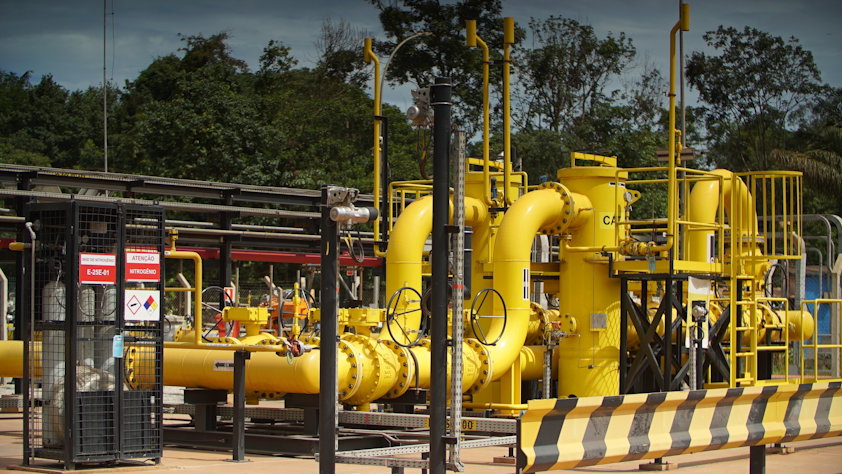
Re-melting aluminum into new products is an energy intensive process where fossil fuel is traditionally used to achieve the required high temperatures. Hydro has research and development of different technologies underway at several locations with the aim to switch from natural gas to renewable energy sources in casthouse furnaces.
At Hydro Sunndal, Europe’s largest primary aluminum plant, Hydro has plans to replace natural gas with locally sourced biomethane. A similar project is under development at Hydro Karmøy. Hydro also aims to switch from natural gas to biomethane in the baking furnaces of the carbon anode production facilities at the Sunndal and Årdal primary plants.
Hydro Sunndal is also serving as a test bed for plasma technology to explore electrification of casthouse furnaces using the same renewable energy that powers Hydro’s primary smelters. If successful, the pilot project has the potential to affect not only the aluminum industry, but also other hard-to-abate industries worldwide.
In the new aluminum recycling facility in Høyanger, Hydro is replacing natural gas with green hydrogen in one of the casting furnaces in an effort to unlock the decarbonization potential of hydrogen in aluminum production. The pilot project builds on the experience from Hydro’s world-first industrial scale test of green hydrogen in aluminum recycling in June 2023.
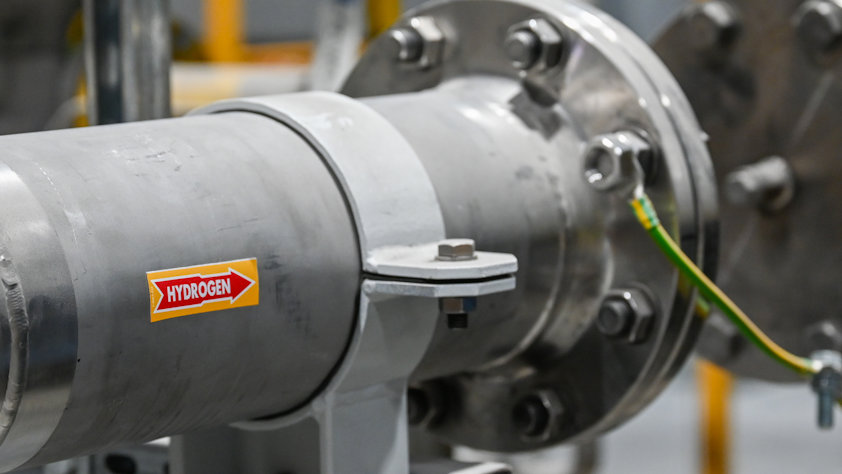
With most logistic operations powered by fossil fuels, Hydro is addressing the emissions in this crucial step of the value chain. Activities include transferring the tonnage transported by truck to sea, barge or rail, increased efforts to develop greener shipping routes in collaboration with suppliers, and using digitalization to improve incentive structures and transparency. The ambition is to achieve a 30 percent reduction in emissions from logistics by 2030.
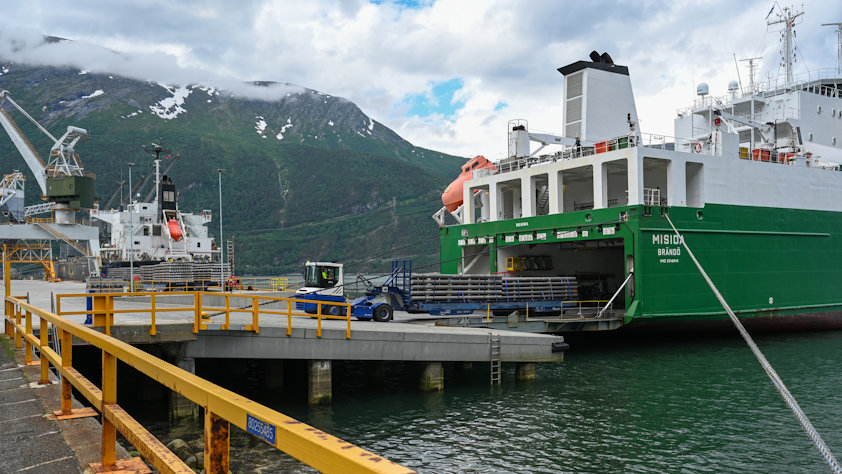
Removing process emissions
With their independent and almost simultaneous discovery in 1886 of an industrial process for making aluminum, Charles Martin Hall and Paul Héroult laid the foundation for all modern aluminum production. However, the Hall-Heróult electrolysis process inevitably emits CO2 when an electric current is passed through aluminum oxide and carbon to form primary aluminum. Hydro is challenging the basic principles of aluminum production by following several pathways of technology development, including an entirely new and groundbreaking process to eliminate emissions from both electrolysis and anode baking.

Under development by Hydro technologists since 2016, the proprietary HalZero technology is based on converting alumina to aluminum chloride prior to electrolysis. Chlorine and carbon are kept in a closed loop, thus avoiding CO2 emissions and emitting only oxygen instead. In 2023, the project won recognition at the COP28 global climate conference as an energy transition changemaker just as Hydro made the push to construct a test facility for HalZero in Porsgrunn, Norway.
The aim is to produce the first aluminum by 2025 and industrial scale pilot volumes by 2030, preparing HalZero for use in greenfield smelter capacity. If successful, HalZero will be an emission-free smelting technology that fully eliminates CO2 emissions from both electrolysis and anode baking.
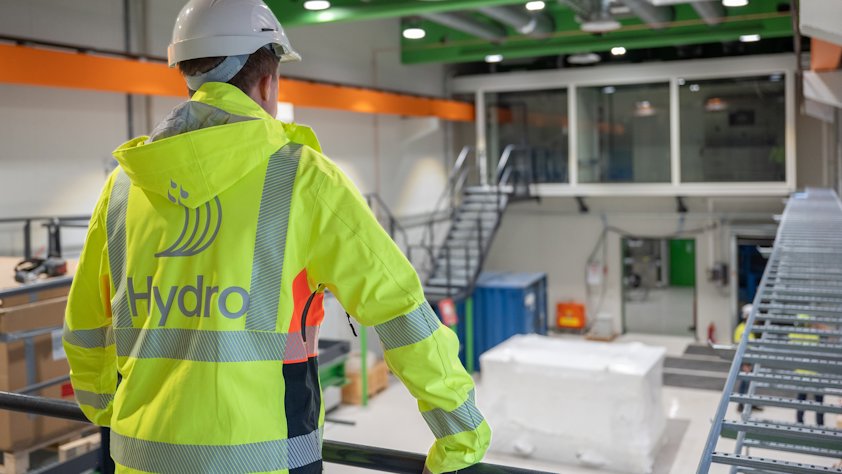
The HalZero technology will be matured in the tailor made test facility currently under construction at the Hydro aluminum Technology Center in Porsgrunn, Norway.
Hydro aims to make the existing Hall-Heróult aluminum smelters fit for the future by retrofitting them with carbon capture and storage technology (CCS). After evaluating several CCS technologies, and developing a roadmap for testing and piloting of the most promising methods, the ambition is to have an industrial scale pilot running by 2030.

With the latest pre-bake technology in aluminum production, an electrolytic cell consumes around half a tonne of carbon for every tonne of aluminum produced. Carbon anodes are made up of fossil materials, but Hydro is seeking to mix bio-materials such as waste from forestry and food production into the anodes. Research and development is currently at an early stage.

Since 1990, Hydro has increased its aluminum smelter capacity by 40 percent. But even so, the company has managed to cut emissions from its smelters in Norway by more than 50 percent, mainly thanks to the full upgrade from the emission intensive Söderberg technology to modern pre-bake potlines in the 2000s. Since then, Hydro has been perfecting smelter operations, culminating in the Karmøy Technology Pilot to pioneer the most climate and energy efficient primary production technology in the world.
Improving operations is a continuous process with large efforts now going into digitalization. The green transition and the digital transition are closely linked, as digital technologies play a crucial role in resource management. Digital technologies can contribute to emission cuts by optimizing operations, improving efficiency, and driving innovation.

Stepping up recycling of post-consumer scrap
Aluminum is infinitely recyclable without loss of the properties that make it an important enabler for the green transition. Recycling of aluminum also takes only five percent of the energy required to produce primary metal in an electrolytic cell.
Hydro offers recycled aluminum under the Hydro CIRCAL brand. It contains at least 75 percent post-consumer scrap and comes with a documented carbon footprint of just 1.9 kilo CO2e per kilo aluminum, about 80 percent lower than the global average in primary aluminum production.
Recycled aluminum is also mixed with primary aluminum directly in the casthouses with recycling technology now introduced at the Årdal and Høyanger plants. Depending on the share of post-consumer scrap, Hydro REDUXA low-carbon aluminum can be delivered with a documented carbon footprint of below 3 kilo CO2e per kilo aluminum.
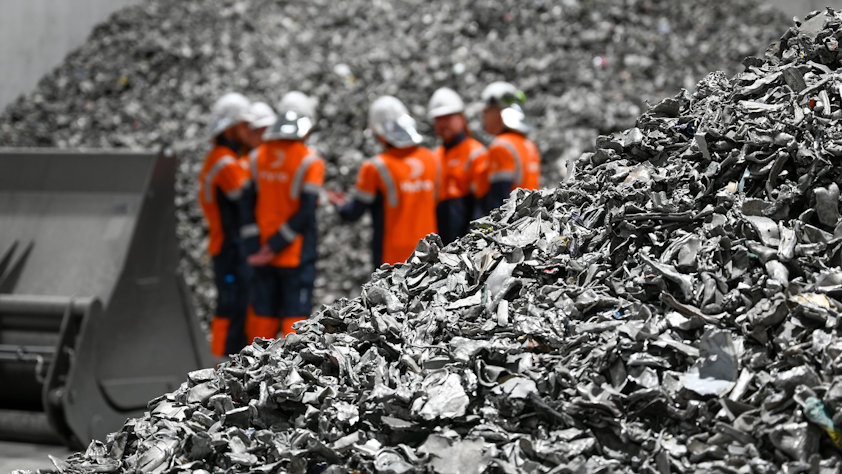
Unlike pre-consumer scrap originating from aluminum production and extrusion processes, post-consumer scrap has lived a past life as beverage cans, windows, car parts or any other consumer product. It comes with a carbon footprint close to zero since the emissions have already been accounted for. This is why recycling more post-consumer aluminum scrap is vital to accelerate emission cuts.
To achieve this, Hydro is continuously exploring new possibilities both to source post-consumer scrap and develop advanced sorting technologies to allow an increased amount of used aluminum to be sorted, repurposed and given a new life.
Hydro’s proprietary HySort technology, utilizing laser induced breakdown spectroscopy (LIBS), allows Hydro to dig deeper into the scrap pile to recycle aluminum that would otherwise end up in landfills. Pioneered at Hydro’s recycling hub in Dormagen, Germany, the technology was introduced to the U.S. market in September 2024.

Stepping up growth in recycling capacity is one of the key factors in Hydro’s overall strategy towards 2030 to meet the increasing demand for low-carbon, recycled products.
Hydro has increased its recycling capacity by more than 650,000 tonnes over the last couple of years. Most of the increase has occurred in Europe, starting with the acquisition of Polish aluminum recycling company Alumetal in 2023, which significantly strengthened Hydro’s recycling position in Europe. In September 2024, Hydro opened its new aluminum recycling plant in Székesfehérvár, Hungary, with an annual capacity of 90,000 tonnes, to serve mainly the automotive market.
Hydro has also been investing in new capacity in North America, including the greenfield recycling plant in Cassopolis, Michigan, which opened in November 2023. One-third of the production at the Cassopolis plant will be produced under the Hydro CIRCAL brand.
Today Hydro recycles aluminum at 35 plant facilities in Europe, North America and South America, with production handled by the company’s upstream and downstream aluminum business areas. In addition, another 200,000 tonnes in new recycling capacity will be coming on stream no later than 2026 in Europe and the U.S., including a new recycling plant in Torija, Spain with a capacity of 120,000 tonnes per year.

When using a high proportion of recycled content in aluminum, the main challenge is how to meet the specific alloy requirements of the end products. This is possible only by putting together a very precise mixture of scrap qualities.
Increasing the share of recycled content in end products requires further innovation. That is why technical collaboration, alloy research and development of new applications are included in the scope of Hydro’s strategic partnerships with customers like Mercedes-Benz, Volvo Group and cable producer NKT.
Hydro’s partnership with Porsche was taken to a new level in July 2024 with an agreement that allows for capacity reservation for Porsche’s supply chain as well as development of new automotive alloys with higher recycled content.
Another milestone was reached earlier in 2024 when UK based bicycle company Brompton rolled out the first ever wheel rims made from 100 percent post-consumer scrap. It was the first time Hydro’s near-zero carbon, recycled aluminum made it into a consumer product after rigorous product testing for safety, strength, durability and corrosion resistance.
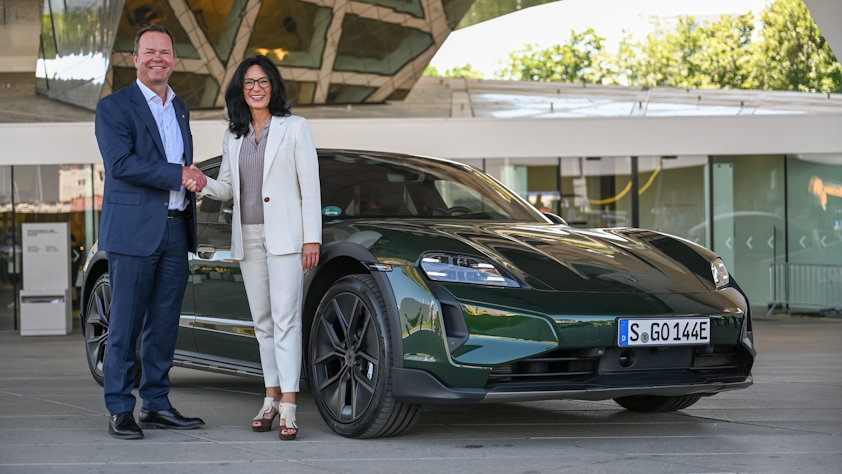
Updated: April 23, 2025
